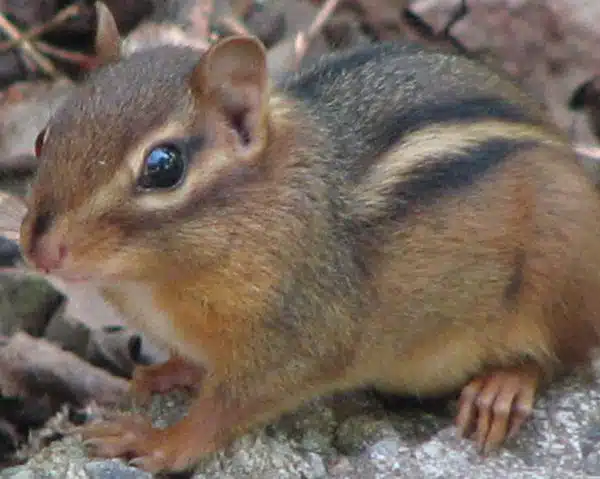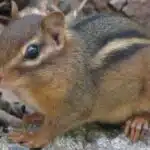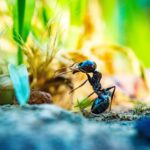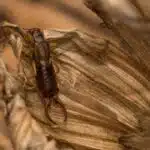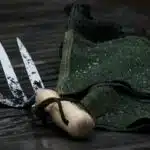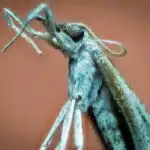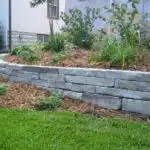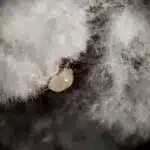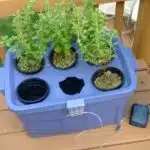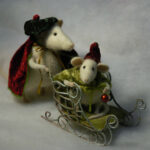As a wildlife and garden management expert, I have seen countless homeowners struggle with the issue of chipmunks invading their gardens. While these small creatures may seem harmless, they can quickly become a nuisance by burrowing under plants, digging up bulbs, and snacking on fruits and vegetables. Furthermore, chipmunks can attract other pests like snakes and birds of prey to your property.
Fortunately, there are several strategies that homeowners can use to keep chipmunks out of their gardens. These methods range from simple deterrents like planting mint or using mothballs to more involved techniques like installing fencing or trapping the animals. By implementing these strategies, you can protect your garden from damage while also preserving the natural habitat of these adorable creatures.
Understanding The Behavior Of Chipmunks
As gardeners, we all know the frustration of watching our hard work being destroyed by small, furry creatures. Chipmunks are notorious for wreaking havoc in gardens and landscapes, but understanding their behavioral patterns can help us better protect our plants.
Chipmunks are members of the squirrel family and are commonly found throughout North America. They are known for their characteristic stripes on their back and sides, as well as their bushy tails. Chipmunks tend to be active during the day, spending most of their time foraging for food and storing it away in underground burrows.
When it comes to habitat preferences, chipmunks prefer areas with ample cover such as brush piles, rock walls, or dense vegetation. They also gravitate towards areas with easy access to food sources such as bird feeders or gardens filled with fruits and vegetables. Being aware of these preferences can help us better anticipate where chipmunks may be lurking in our gardens.
Moving forward, we must learn how to identify signs of chipmunk activity in our garden if we want to keep them at bay.
Identifying Signs Of Chipmunk Activity In Your Garden
Chipmunk burrows can be identified by the presence of a small mound of dirt at the entrance of an underground tunnel system. These tunnels often lead to underground chambers that can cause damage to gardens and landscaping. To recognize chipmunk damage, it is important to look for signs of gnawing or chewing on plants or vegetables, as well as signs of digging or uprooting of plants. Additionally, it is important to note any visible holes or tunnels that have been dug in the garden, as these could be signs of chipmunk activity.
Spotting Chipmunk Burrows
Identifying chipmunk burrows is an important step in understanding their behavior and ultimately keeping them out of your garden. These critters are known to dig multiple burrows, which serve as their primary means of shelter and food storage. You can identify a chipmunk burrow by looking for small holes that are approximately two inches in diameter, with a nearby mound of dirt marking the entrance.
It’s important to note that chipmunks prefer to build their burrows near shrubs or trees for added protection. They also tend to choose areas with loose soil, such as gardens or flower beds, making these locations especially susceptible to chipmunk activity. By recognizing these patterns, you can take steps to deter them from digging in your garden.
If you do spot a chipmunk burrow in your garden, it’s best to act fast before they cause significant damage. One option is to fill the hole with dirt and cover it up, discouraging the chipmunks from returning. Another method is to use repellents that emit strong smells or sounds that are unpleasant to the animals. By being proactive and vigilant in identifying signs of chipmunk activity, you can keep your garden free from unwanted visitors without causing harm to these cute but pesky critters.
Recognizing Chipmunk Damage
As a wildlife and garden management expert, recognizing signs of chipmunk activity is crucial in protecting your garden from damage. While identifying burrows is important, it’s equally essential to be able to recognize the damage caused by these critters. Chipmunks are known to feed on a variety of common plants, including bulbs, flowers, fruits, and vegetables. They may also gnaw on bark or dig up roots in search of food. By familiarizing yourself with common plants that chipmunks target and observing any unusual damage or missing foliage, you can quickly identify signs of their activity.
In addition to plant damage, chipmunk behavior can also be recognized through their distinctive droppings and tracks. Their feces are small and cylindrical in shape, similar to those of mice but larger in size. You may also notice small footprints in the soil around burrows or feeding areas. By keeping an eye out for these telltale signs, you can gain a better understanding of where the chipmunks are active and take appropriate measures to deter them from causing further damage.
When it comes to preventing chipmunk damage in your garden, there are several effective strategies you can employ. These include using physical barriers like fencing or netting, planting natural repellents such as garlic or mint around vulnerable areas, and utilizing scare tactics like motion-activated sprinklers or decoys. By combining multiple methods and monitoring your garden regularly for signs of chipmunk activity, you can ensure that your plants remain healthy and vibrant throughout the growing season.
Using Natural Deterrents Like Mint And Garlic
Natural deterrents like herbs can help keep chipmunks out of your garden. Using herbs, like rosemary and thyme, as chipmunk deterrents is an effective way to repel these pesky rodents. These herbs have a strong scent that chipmunks find unpleasant, which can discourage them from entering your garden. Simply plant these herbs around the perimeter of your garden or sprinkle dried leaves around the area to keep chipmunks away.
Another effective way to control chipmunk populations is by attracting natural predators, such as hawks and owls. These birds of prey naturally hunt for small rodents and can help reduce the number of chipmunks in your garden. You can attract these predators by providing them with nesting boxes or perches in nearby trees. This will encourage them to visit your garden and hunt for chipmunks.
Incorporating natural deterrents and attracting natural predators are both effective ways to keep chipmunks out of your garden. However, these methods may not completely eliminate the problem. In the next section, we will discuss how creating a barrier with chicken wire or fencing can provide additional protection for your plants against these pesky rodents.
Creating A Barrier With Chicken Wire Or Fencing
To effectively keep chipmunks out of your garden, creating a barrier with chicken wire or fencing is a viable solution. This method can be achieved through DIY installation or by hiring a professional to do it for you. Whichever option you choose, it is essential to ensure that the fence or chicken wire is properly installed and has no gaps that these critters can squeeze through.
When choosing the right type of fencing or chicken wire, consider factors such as durability, visibility, and cost. Chain-link fences are durable and provide excellent visibility but may not fit aesthetically in all gardens. Chicken wire, on the other hand, is affordable and blends well into most gardens; however, it may not be as durable as chain-link fences. Ultimately, choose a material that fits your budget and meets your specific needs.
To create an effective barrier using fencing or chicken wire, follow these tips:
- Choose the appropriate height of fencing to deter chipmunks from jumping over.
- Bury at least six inches of fencing below ground level to prevent burrowing.
- Ensure that there are no gaps in the fencing where chipmunks can enter.
Creating a barrier with chicken wire or fencing is an effective way to keep chipmunks out of your garden. Whether you opt for DIY installation or hire professionals to do it for you, remember to choose the right material that meets your specific needs. In the next section, we’ll discuss how installing motion-activated sprinklers can also help keep these pesky critters away from your garden.
Installing Motion-Activated Sprinklers
Motion-activated sprinklers are a great way to keep chipmunks out of your garden. These sprinklers work by detecting the movement of animals through infrared sensors. When a chipmunk triggers the sensor, a sudden burst of water is released from the sprinkler, scaring them away from your garden.
One important aspect of using motion-activated sprinklers is adjusting sensitivity. It is essential to tweak the settings so that the sensor can detect only chipmunks and not other harmless creatures such as birds or squirrels. You can adjust this setting by increasing or decreasing the range and angle of detection. This will help you avoid wasting water on unnecessary triggers.
Troubleshooting issues can also arise with motion-activated sprinklers, such as false alarms or malfunctioning sensors. In such cases, it would be best to check if the batteries are charged and if there are any obstructions in front of the sensor that may trigger it unnecessarily. Regularly performing maintenance checks will ensure that your motion-activated sprinkler system is functioning correctly and effectively keeping chipmunks out of your garden.
As effective as motion-activated sprinklers may be, they only work when within range and line-of-sight with the chipmunk. In our next section, we will discuss another method for repelling chipmunks using ultrasonic devices that emit high-frequency sound waves undetectable to human ears but unbearable for rodents like chipmunks.
Using Ultrasonic Devices To Repel Chipmunks
Ultrasonic devices have been marketed as effective repellents for chipmunks in gardens. These devices emit high-frequency sounds that are supposed to deter chipmunks and other rodents from entering the area where they are installed. The effectiveness of ultrasonic devices as a deterrent for chipmunks, however, is still debatable among experts.
Pros of using ultrasonic devices include their ease of use. They do not require any special skills or knowledge to install and operate. Ultrasonic devices are also environmentally friendly since they do not involve the use of harmful chemicals or pesticides. Additionally, ultrasonic devices can be used in conjunction with other methods such as fencing and trapping.
On the other hand, there are cons to using ultrasonic devices. One is their effectiveness in repelling chipmunks highly depends on factors like the strength and frequency range of the device, as well as the number of units used per square foot. Ultrasonic waves can also be blocked by solid objects like walls, which limits their coverage area. Safety is another concern since these devices emit sounds that may cause discomfort to pets or humans if set at a high volume.
In evaluating the effectiveness and safety of using ultrasonic devices to repel chipmunks in your garden, it is important to weigh the pros and cons carefully before making any decisions. If you decide to use this method, ensure that you follow instructions carefully and choose a reputable brand with positive reviews from users who have successfully used them against chipmunks. In combination with other methods like trapping or fencing, you may find greater success in keeping your garden free from pesky critters.
To complement your efforts towards keeping chipmunks out of your garden, placing repellent plants around your garden can further improve your chances of success.
Placing Repellent Plants Around Your Garden
One effective method of deterring chipmunks from invading your garden is by planting companion plants. Companion planting involves placing different plant species together to repel pests and attract beneficial insects. One such plant that can help keep chipmunks at bay is the marigold. These flowers emit a strong odor that chipmunks find repulsive, making them less likely to enter your garden.
Another option for keeping chipmunks away from your garden is by incorporating natural pesticides into your planting strategy. Certain herbs such as peppermint, rosemary, and garlic have been shown to act as natural repellents for a variety of pests including chipmunks. Simply plant these herbs around the perimeter of your garden or use their oils in a homemade pesticide spray to create an unwelcoming environment for these critters.
By utilizing companion planting and natural pesticides, you can effectively manage the presence of chipmunks in your garden without resorting to harmful chemicals or lethal traps. However, if these methods do not provide sufficient protection, it may be necessary to consider applying commercial repellents. In the next section, we will discuss some effective ways to incorporate commercial products into your chipmunk management plan.
Applying Commercial Repellents
Commercial repellents are a popular option for gardeners looking to deter chipmunks. There are a variety of commercial products available, including sprays, granules, and ultrasonic devices. However, it is important to note that the effectiveness of these repellents can vary depending on factors such as the concentration of active ingredients and the specific species of chipmunk in your area.
When using commercial repellents, it is also important to consider any potential harmful effects. Some products may contain chemicals that can be harmful to humans or wildlife, so it is important to carefully read labels and follow instructions for safe use. Additionally, some studies have suggested that certain types of ultrasonic devices may not be effective at repelling chipmunks and other rodents.
If you do decide to use a commercial repellent, here are some tips for maximizing their effectiveness:
- Apply the product according to instructions and reapply as needed.
- Use multiple types of repellents simultaneously for better results.
- Combine repellent use with other deterrents such as fencing or netting.
- Rotate between different brands or types of repellents over time to prevent chipmunks from becoming accustomed to them.
With this information in mind, you can make an informed decision about whether or not to use commercial repellents in your efforts to keep chipmunks out of your garden. In the next section, we will explore another option for managing chipmunk populations: trapping them with live traps.
Trapping Chipmunks With Live Traps
As the saying goes, prevention is better than cure. While commercial repellents can be effective, there are other ways to keep chipmunks out of your garden. One way is by removing potential food sources, such as bird feeders and fallen fruits or nuts. You can also use physical barriers like mesh screens around garden beds or fences around the perimeter of your yard.
However, if you already have a chipmunk problem that needs to be addressed, trapping them with live traps can be an effective solution. When selecting a trap, make sure it is designed for small animals like chipmunks and bait it with their favorite foods such as seeds, nuts or peanut butter. Once you have trapped the chipmunk(s), release them far away from your property in a wooded area or open field.
It’s important to remember that while trapping can be humane when done correctly, it’s still stressful for the animal. To minimize this stress and increase their chances of survival after release, handle them gently and avoid releasing them during extreme weather conditions. By using these humane methods to relocate chipmunks instead of killing them, you can maintain harmony between your garden and local wildlife populations.
Using Humane Methods To Relocate Chipmunks
Chipmunks can cause damage to gardens and should be humanely relocated when necessary. Identifying their habits is a crucial step in this process, as it ensures that the most appropriate relocation strategies are adopted. Humanely capturing chipmunks is also important, as it involves using traps which can be monitored regularly and reduce the impact on the animal. Additionally, once they have been captured, they should be released in an appropriate area which offers the same resources they were accustomed to in their previous home. This will ensure the chipmunks are safe and have the best chances of survival.
Identifying Chipmunk Habits
As a wildlife and garden management expert, identifying the habits of chipmunks is vital in using humane methods to relocate them. Chipmunks are small rodents that thrive in gardens due to the abundance of food sources. One way of identifying their presence is by observing their chipmunk burrow, which is typically located near or under structures such as rocks, logs, and bushes. These burrows can be identified by small mounds of dirt with a hole in the center.
Another important factor to consider when identifying chipmunk habits is their diet. Chipmunks are omnivores that consume both plants and animals. Their diet consists of fruits, nuts, seeds, insects, and small vertebrates. In gardens, they can cause significant damage by digging up bulbs and eating vegetables such as corn and tomatoes. If left unchecked, they can quickly destroy a garden.
To sum up, identifying chipmunk habits is crucial in keeping them out of your garden through humane relocation methods. By observing their burrows and understanding their diet preferences, you can take preventative measures such as covering vulnerable areas with mesh wire or using natural repellents to deter them from entering your garden. Ultimately, these steps will help reduce the potential harm caused by these adorable but destructive rodents.
Humanely Capturing Chipmunks
Understanding chipmunk behavior is essential in using humane methods to relocate them from gardens. One of the most effective ways to capture chipmunks is through live trapping, which involves capturing the animal unharmed and then releasing it into a suitable habitat. Live traps are widely available and can be used without harming the animal. The traps are baited with food, which should be changed regularly, to entice the chipmunk inside.
When setting up a live trap, it is important to place it near the chipmunk’s burrow or other areas where they have been seen frequently. This increases the chances of capturing the animal while minimizing its stress and damage to surrounding vegetation. Once captured, it is crucial to release the chipmunk into an appropriate environment that will provide adequate food sources and shelter.
Humane relocation techniques ensure that chipmunks are not harmed during their capture and release. However, it is important to note that relocation should only be done by trained professionals who understand how to handle these animals properly. Relocation must also adhere to local regulations regarding wildlife management practices. By using humane methods like live trapping and relocating chipmunks safely, we can protect both our gardens and these adorable rodents’ welfare.
Releasing Chipmunks Safely
After successfully capturing a chipmunk using humane live trapping methods, the next step is to release it into a suitable environment. It is important to choose the best habitats for these rodents, which typically include areas with plenty of vegetation, shelter, and food sources. A suitable habitat may be found in nearby wooded areas or parks. However, before relocating a chipmunk, it is essential to understand the relocation laws in your area.
Relocation laws vary by location and are designed to protect both wildlife and humans. For instance, some states prohibit the relocation of animals beyond specific geographical boundaries or require permits for relocation activities. Moreover, releasing chipmunks into unsuitable environments can cause harm or even death to the animal because of inadequate food sources or predation by other animals. Therefore, it is crucial to comply with all applicable regulations when relocating chipmunks.
To release chipmunks safely after capture, it is recommended to place them near a tree line or bushy area with ample ground cover for shelter and nesting. The ideal spot should have access to water and natural food sources like nuts, fruits or seeds. After releasing the animal, observe its behavior from a safe distance for some time to ensure that it acclimates well to its new surroundings. By following these guidelines and taking appropriate measures before releasing captured chipmunks back into their natural habitat, we can maintain harmony between wildlife and our gardens while preserving these creatures’ welfare.
Preventing Future Infestations With Proper Garden Maintenance
Proper garden maintenance is crucial in preventing future chipmunk infestations. One of the most important steps to take is to maintain a healthy soil. Chipmunks thrive in gardens with unhealthy soil because it makes it easier for them to dig and burrow. To keep your garden’s soil healthy, you can incorporate composting tips such as adding organic matter like leaves, grass clippings, and food scraps to your garden beds. This will provide nutrients to the soil and also help retain moisture.
Another important tip for proper garden maintenance is cleaning up debris regularly. Dead plants, weeds, and other organic materials can attract chipmunks by providing cover or shelter for them. By removing these materials from your garden, you are reducing potential hiding spots for chipmunks and making it less attractive for them to invade your space.
Lastly, it’s important to be mindful of what you’re planting in your garden. Some plants are more attractive to chipmunks than others. For example, they love bulbs like tulips and crocuses as well as fruits like strawberries and raspberries. By planting a mix of plants that are unattractive to chipmunks along with those that are desirable to you, you can create a balanced environment that is less likely to attract these furry critters.
By following these simple tips for proper garden maintenance such as composting tips and keeping a clean yard free of debris, you can reduce the likelihood of future chipmunk infestations in your garden. In the next section, we’ll discuss another important step in keeping chipmunks out of your yard: removing attractive food sources from your yard.
Removing Attractive Food Sources From Your Yard
Like a buffet table at a potluck, your yard may be a tempting feast for chipmunks. These cheeky critters are known to enjoy munching on plants, fruits, and nuts. If you want to keep chipmunks out of your garden, it’s important to remove any food sources that might attract them.
One way to do this is by using natural remedies. For example, you can make a spray from hot peppers or garlic and spray it around your garden. The smell and taste will deter chipmunks from nibbling on your plants. Another option is to plant herbs like lavender or mint which have strong scents that chipmunks dislike.
If you’re looking for a more commercial solution, there are plenty of products available that can help keep chipmunks away. There are ultrasonic devices that emit high-frequency sounds that repel rodents, as well as granular repellents that contain natural ingredients like peppermint oil or predator urine. Just be sure to read the label carefully before using any product in your garden.
To really ensure that chipmunks stay out of your yard, it’s important to keep garbage and compost bins secure. These areas can be attractive food sources for these little rodents, so make sure they are sealed tightly with lids and stored in an area where they won’t attract hungry critters. By removing attractive food sources from your yard and keeping garbage bins secure, you’ll be well on your way to keeping chipmunks out of your garden.
Keeping Garbage And Compost Bins Secure
Securing bins that contain garbage and compost is crucial in preventing chipmunks from accessing them. Chipmunks are omnivores and will eat anything they can find, including food scraps and organic matter in your compost bin. To prevent access, use sturdy containers with tight-fitting lids or secure the lids with bungee cords or clamps. It’s also essential to keep the bins in an area where chipmunks cannot climb onto them easily.
In addition to securing the bins themselves, it’s important to be mindful of what you’re putting into them. Avoid placing meat scraps or dairy products in your compost bin, as these can attract not only chipmunks but also other unwanted wildlife like raccoons and skunks. Instead, stick to vegetable and fruit scraps, eggshells, coffee grounds, and yard waste.
By securing your garbage and compost bins and being mindful of what you’re putting into them, you can greatly reduce the likelihood of attracting chipmunks (and other critters) to your garden. But what if they’ve already found their way into your yard? In the next section, we’ll discuss sealing off potential entry points into your home to keep these rodents out for good.
Sealing Off Potential Entry Points Into Your Home
Having secure garbage and compost bins is a great way to keep chipmunks away from your garden. However, there may be other potential entry points that these critters can exploit. To seal off these entry points, you must inspect your home’s exterior and look for any gaps or holes.
DIY solutions can be effective in sealing off potential entry points. For example, using caulk to fill in gaps around windows or doors can prevent chipmunks from squeezing through. Additionally, installing mesh screens over vents and chimneys can also keep them out. It’s important to note that chipmunks are agile climbers, so make sure to also cover any openings near the roofline.
If you’re unsure about how to properly seal off potential entry points or if you’ve tried DIY solutions without success, consider hiring experts in wildlife exclusion services. These professionals have the knowledge and tools necessary to identify all possible entry points and effectively seal them off. They can also offer advice on other measures you can take to prevent chipmunks from entering your garden, such as removing food sources or using natural deterrents like predator urine.
While DIY solutions may be enough for some homeowners, seeking professional help is always an option if necessary. By taking proactive steps to seal off potential entry points into your home and garden, you can effectively keep chipmunks at bay and protect your property from damage caused by these pesky critters.
Seeking Professional Help If Necessary
Professional help is an option for those who are struggling to keep chipmunks out of their garden. While there are many DIY methods available, some homeowners may find that these solutions are not effective or sustainable in the long-term. In such cases, it may be time to consider hiring a professional.
One of the pros of seeking professional help is that experts have access to a wider range of tools and techniques than the average homeowner. They can identify the root causes of chipmunk infestations and develop customized strategies to address them. Additionally, professionals can often provide ongoing support and maintenance to ensure that chipmunks do not return.
However, it is important to weigh the cons as well. Hiring a professional can be expensive, and costs vary depending on the severity of the infestation and the type of services required. Homeowners should conduct a cost analysis before committing to any services. It may also be necessary to temporarily vacate your home or garden during treatment, which can be inconvenient.
In summary, seeking professional help can be an effective solution for those struggling with chipmunk infestations in their garden. However, it is important to carefully consider both the pros and cons before making any decisions. Conducting a cost analysis and researching reputable professionals in your area can help ensure that you make an informed choice that meets your needs and budget.
Conclusion
Chipmunks can be a nuisance for gardeners, causing damage to crops and flower beds. Understanding the behavior of these small rodents is crucial in deterring them from your property. Signs of chipmunk activity include dug-up soil, holes in the ground, and nibbled plants. Natural deterrents like mint and garlic can help keep chipmunks away, as well as creating barriers with chicken wire or fencing.
Motion-activated sprinklers are another effective method to deter chipmunks from entering your garden. It is also important to remove attractive food sources from your yard, such as fallen fruit or birdseed, and secure garbage and compost bins. Sealing off potential entry points into your home can prevent indoor infestations.
When all else fails, seeking professional help may be necessary to control a chipmunk population. As a wildlife and garden management expert, it is important to prioritize humane methods of removal while ensuring the safety of both humans and animals involved. Taking preventative measures early on can save time and effort in the future, ultimately leading to a healthier and more beautiful garden space for all to enjoy.
Image Credits
- “baby Chipmunk playing in the yard yesterday!” by Vicki’s Nature (featured)

